Shark Action off the Beach
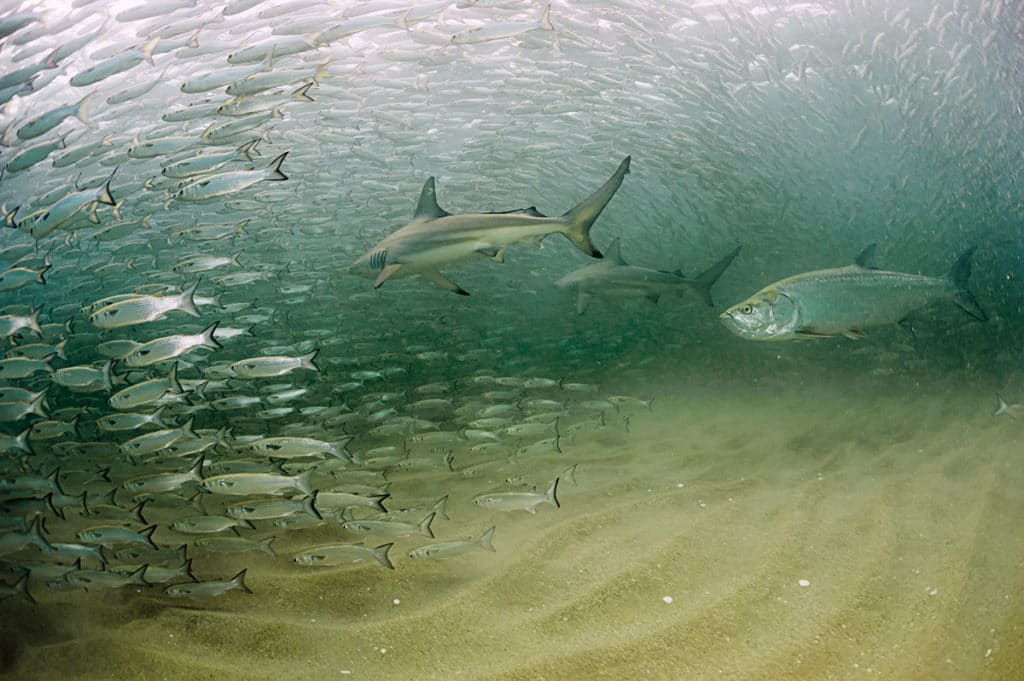
How often is the word “guaranteed” included in a fishing invite? And how often is that fishing invitation an opportunity to target 75-plus-pound sharks that violently attack popping plugs and flies? Those who are skeptical of such claims have never fished for south Atlantic’s sportiest sharks.
Spinners and blacktips — two of the most acrobatic sharks in the Atlantic — invade South Florida Atlantic beaches by the score each fall and winter. Most sharks don’t jump when hooked, but these two similar species leap clear out of water like makos. Yet, surprisingly, I often have to entice new anglers to try this style of shark fishing.
That First Hookup
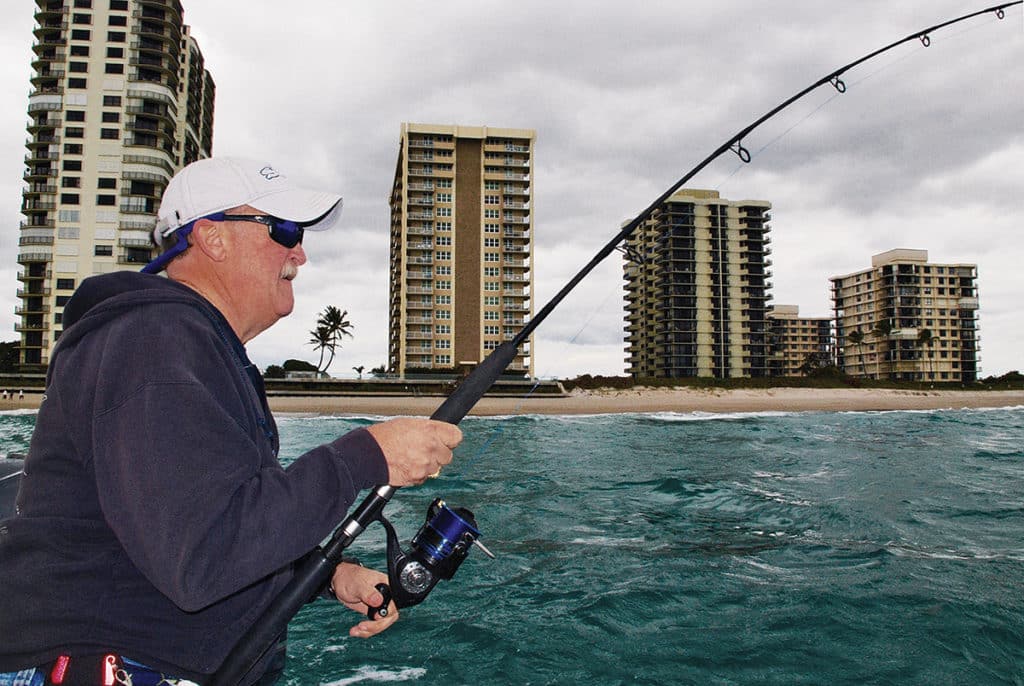
It was, by Florida’s wimpy standards, a cold winter morning in Riviera Beach. Reliable 15-knot southeast winds straightened out the flags at the Newport Cove Marina as we boarded Capt. Tore Turney’s 31-foot Contender Reel Lucky. Ten minutes later we were outside Palm Beach Inlet, cruising north along the beaches of Singer Island.
Turney stood at the bow of the boat. He leaned back against a dock line fixed to the bow cleat as he directed his mate, Capt. Ken Schlecther, which way to steer the boat. Within a few minutes, Turney pointed out signs of sharks, including fish scooting away from our boat and distant free-jumpers. We anchored 200 yards from the shore break in 15 feet of clear, green water.
My three friends joining me as anglers only had prior experience shark fishing with bait. Today would be different. Today we were going to use lures too. But only one of them had any experience casting plugs, so we started with natural bait.
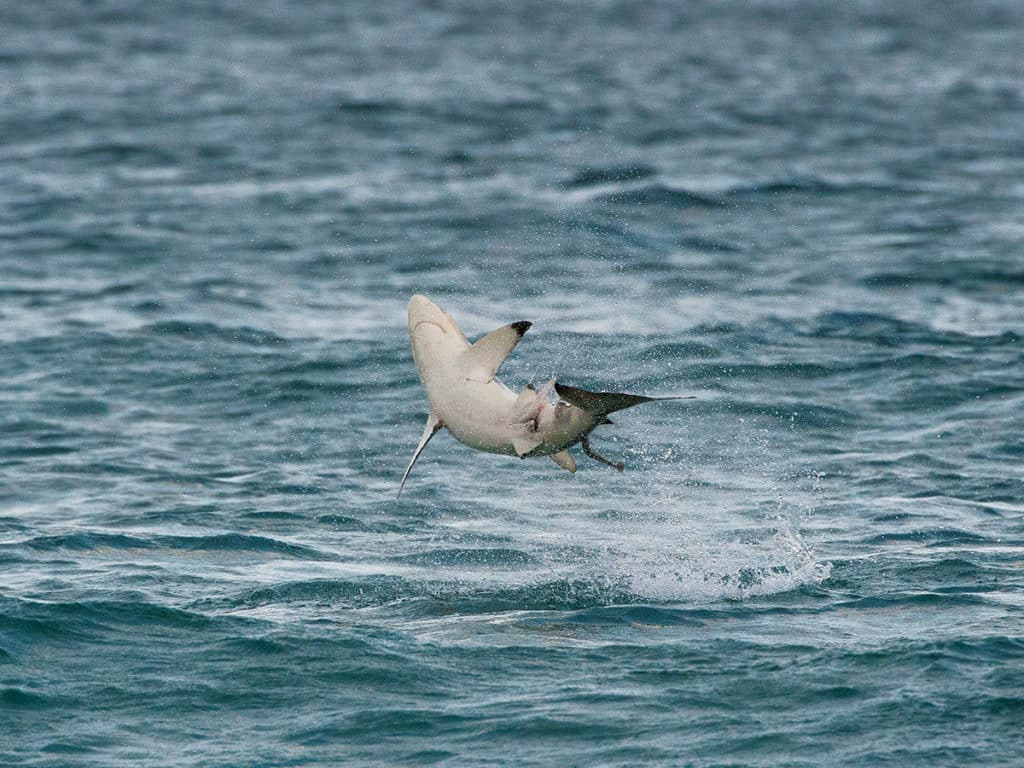
Turney started chumming with a block of ground bunker (menhaden) and a whole little tunny (aka bonito or false albacore), tail-roped to a stern cleat, then sliced a few times to release scent into the chum slick. Fishing outfits included medium-spinning and light-conventional rigs, loaded with 20- and 30-pound-test braid. A circle hook, connected to a few feet of single-strand wire, was attached to a heavy braided leader for abrasion resistance. Each angler cast out a slab of false albacore in different directions from the boat.
Less than a minute passed before the first rod doubled over and the reel started to scream. John Kauffman, from Longwood, Florida, grabbed the rod from a bow holder and hung on as a shark soared free of the water. Then the hooked fish began a sustained run straight toward the beach, with Kauffman running toward the stern in hot pursuit.
As he passed by Phil Cohen, from Boynton Beach, Florida, Cohen’s rod doubled over with a repeat performance from another bronze-colored shark. His shark dragged him in the opposite direction. Amid the excitement of both anglers, Mike Richmond, an angler from Miami Beach, yelled out, “I’ve got one too!” The chaotic triple hookup happened in a matter of seconds — a common situation with winter sharks along the Palm Beach coast.
The Kite Approach
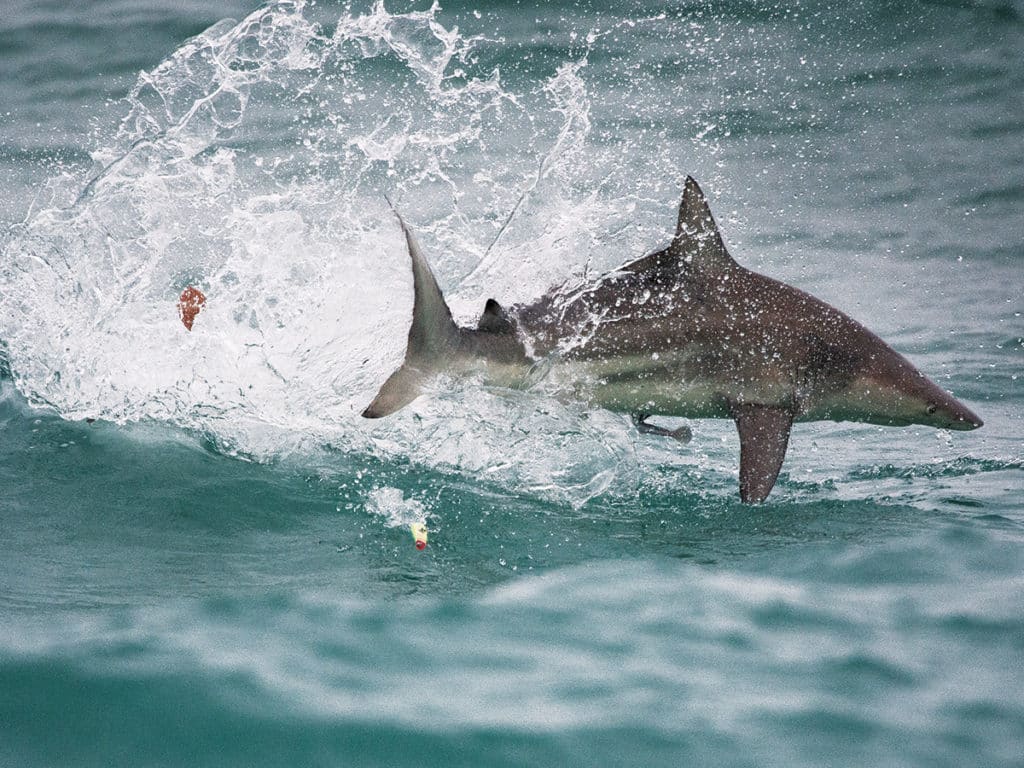
With each of my friends busy fighting his fish without crossing each other’s lines, I helped Turney set up his kite rig for luring sharks to the surface. The setup is simple, with three release clips and a conventional outfit to control the hookless slab dangling in the water. False albacore, barracuda or jack crevalle are perfect baits. (A teaser bait connected to a regular setup is another option, but it’s not nearly as far-reaching or effective as the kite approach.)
When sharks are hanging back in the slick or near the surf line, a kite and sturdy hand on the kite reel can lure fish toward the boat by walking the teaser bait along the surface. Be ready to repeatedly jerk it away from an interested shark or even lift it into the air when suspended from a kite. The kite itself allows the bait to fall back to the surface with a splash, exciting and frustrating the pursuer.
Sometimes a shark does catch a teaser bait and steals it. When this happens, another slab is sent aloft attached to the next kite clip, and the kite is allowed to fly farther from the boat. This allows for three lost teaser baits before bringing the kite back to the first clip again.
After about 20 minutes, Kauffman’s shark circled the boat and passed under our taut anchor line. Turney ran to the bow and helped Kauffman pass his rod under the rope, following the shark. This happened about six times with each angler’s fish before finally getting the sharks to the boat for successful releases.
Turney normally puts new strip baits in the water after each released fish, but we decided against it. With everyone warmed up, the time was right to pull out the topwater lures.
Blacktip Versus Spinners
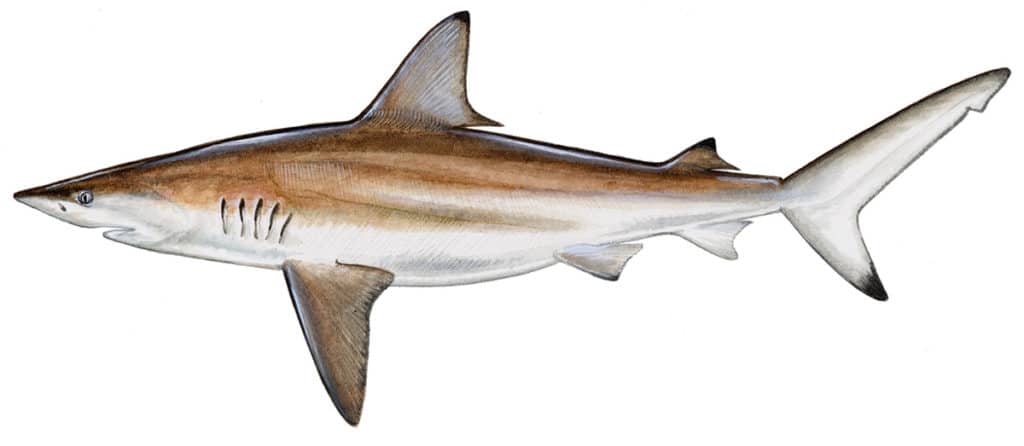
During the heat of the battle, and even at boatside, it takes a keen eye to distinguish between blacktip and spinner sharks. The most easily recognized difference between the two species is that the tip of the anal fin on a spinner shark is black. Strangely enough, on the blacktip, the anal-fin tip is the same (gray) color as the fin.
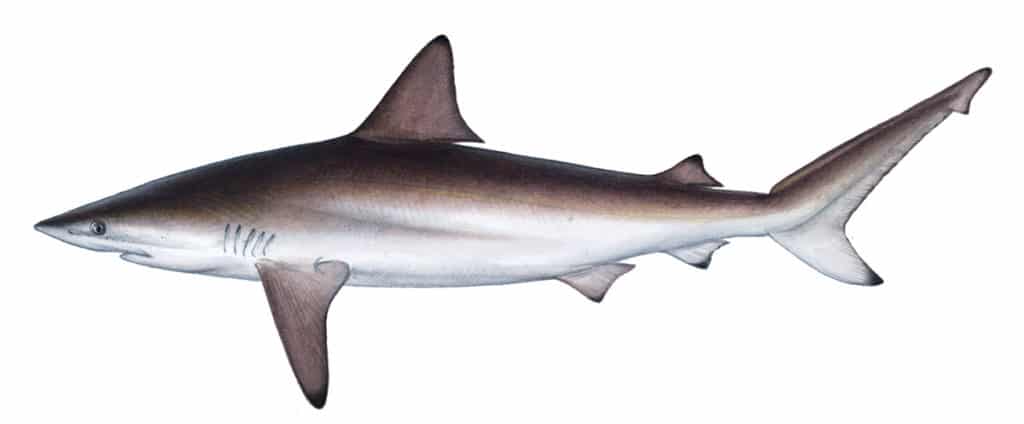
When these species are hooked and jump into the air, sometimes they’ll spin like a well-thrown football. Your first thought might be that you’ve hooked a spinner shark, but don’t be fooled — scientists point out that both species can execute the same aerials. Both species prefer water temperatures near 73 degrees Fahrenheit, which helps explain why they head to South Florida in winter to reproduce. Mixed in with other shark species, the blacktip and spinner aggregations along South Florida help make up the largest annual shark migration in U.S. waters.
Lure Preparation
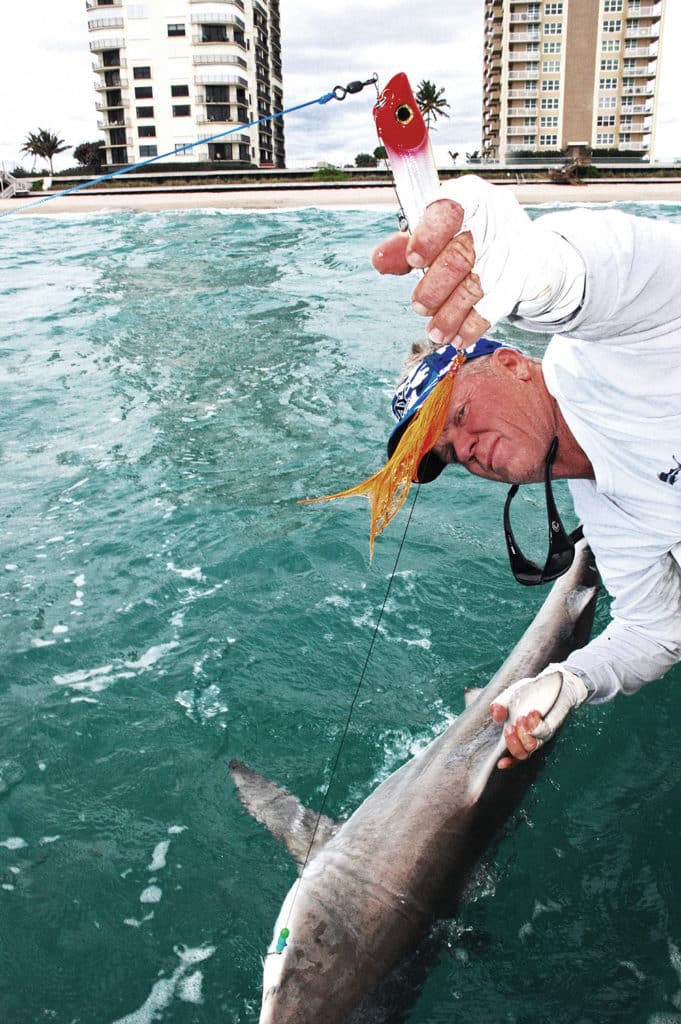
I had brought along three favorite spinning outfits: 7-foot, 12- to 20-pound Star rods with Shimano Stradic 8000 reels loaded with 20-pound braid. A 10-foot abrasion leader of 200-pound-test braided line separates the 20-pound main line from the 2-foot wire leader. I use the heavy braid because it is softer, thinner and more flexible than fluorocarbon or mono, allowing for longer and easier casts. Still, the necessary knot connections limit casting distance of even the most aerodynamic lure. A high cast toward the suspended teaser takes advantage of the same wind holding up the kite.
I’ve used hookless poppers in the past to play with excited sharks and tease them in for fly-fishermen, but typically, popping plugs are armed and dangerous. Releasing sharks landed on bait requires cutting the single-strand wire leader close to the fish’s mouth. Releasing a shark that attacked a lure with trebles is much harder to accomplish. The thought of a shark swimming away with a multihook lure in its face bothers me, so I came up with a lure modification that easily and safely releases them. The trebles are removed and only a single tail hook is used. Wire leader is run through the split rings in a way that allows for safe and easy removal of the plug.
Bright orange and yellow are the best colors for flies, so I use comparable colors with plugs. A Gibbs’ Pencil Popper spray-painted bright orange and sprinkled with gold sparkle is one of my favorite presentations. I also cast bright-yellow red-head Bass Pro Lazer Eye Pencil Poppers.
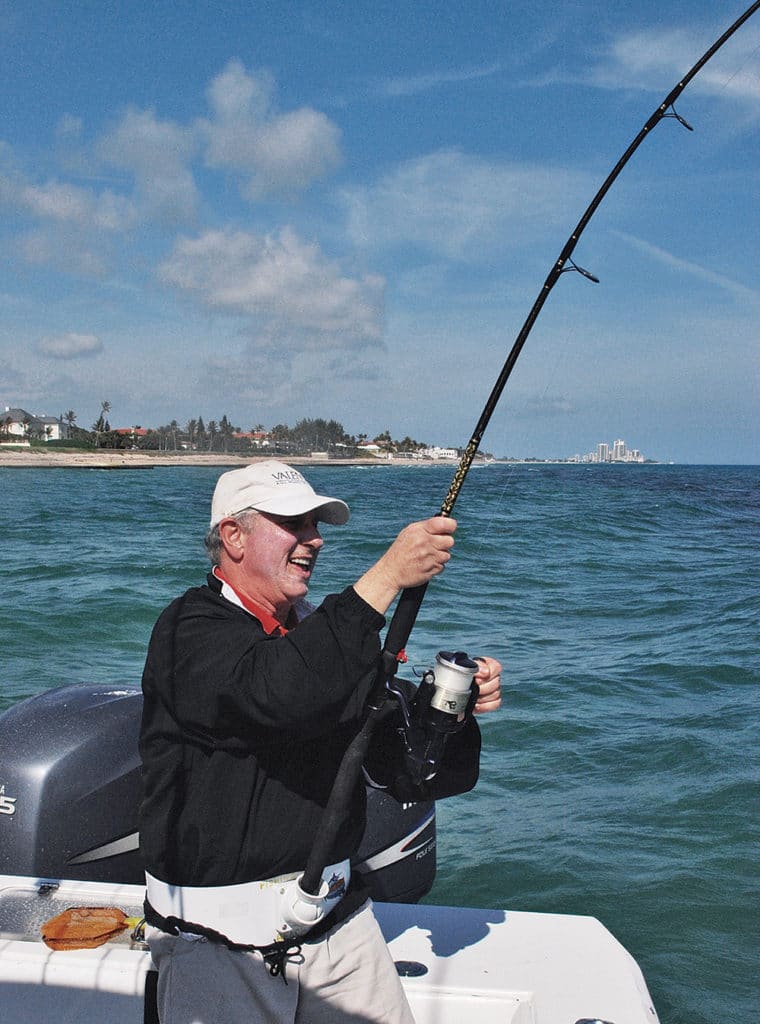
The plan was to introduce my friends to the thrill of hooking these fish at the surface. I started with Kauffman, who has experience casting to redfish, trout and snook. I had him cast one of my modified poppers as close as possible to the suspended kite bait and showed him how to make that lure dance, with the rod butt between my legs, holding the rod blank just above the foregrip. Then I began a rhythmic back-and-forward retrieve while slowly cranking the reel.
The pencil popper stood tall on its tail with most of its body out of the water. Each rod gyration made the plug’s head swing back and forth and slam into the water’s surface. The lure hardly moved away from the teaser while still creating a white froth and staying in the strike zone. After a couple of tries, Kauffman got the hang of it. He was concentrating so hard on the technique that a sharky surface explosion surprised him.
A robust hook-set is required if a shark has the plug firmly in its teeth. Often the result is the shark spitting the plug before the hook sets. That happened the first time for Kauffman, but soon after, he hooked up. The shark ripped line from the reel and greyhounded across the surface as everyone cheered. Then, the shark turned sharply toward the bow.
While Kauffman fought his fish, Turney had to keep full attention on the teaser bait; several times a shark would sneak up and grab the bait without first showing itself at the surface.
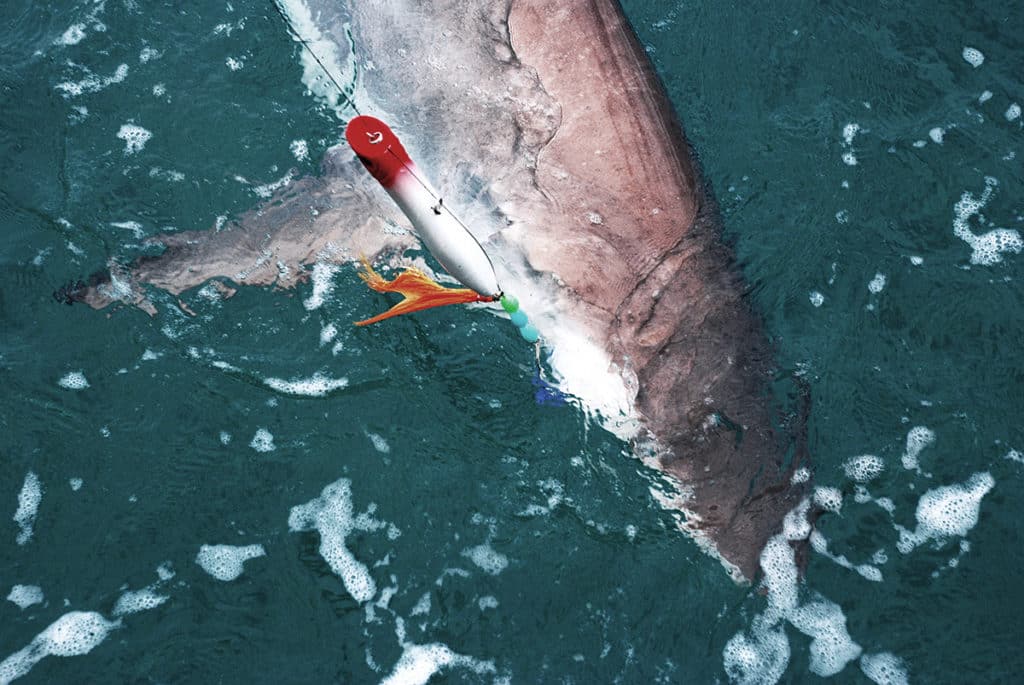
Kauffman finally had his fish circling the boat and causing the usual excitement at the anchor line. With the heavy braid back on the reel, it was easy for Turney to grab the plug with one hand. The plug and attached feathers slid up the metal leader, stopping at a barrel swivel 3 feet away from the shark’s teeth. With no hooks swinging around and little need to take a leader wrap, Turney grabbed the plug to control the fish. With the plug as a handle, anglers can reach down to remove the hook or cut the wire close to the fish’s mouth. If the hook point sticks out through the fish’s skin, a leader man can grab the hook bend with a pair of pliers. Cut the wire at the hook eye, and the needle-eye hook slides out through the puncture outside the mouth.
High fives were given to an exhausted Kauffman after the release. Richmond and Cohen continued casting and popping but just couldn’t get a shark to grab the popper. We finally helped them by rigging and casting out a couple of bait teasers. They retrieved their plugs alongside the bait teasers and both hooked up immediately.
After a couple of sharks each, my friends begged off fishing, so I pulled out my 12-weight fly rod. I use 8 feet of 60-pound nylon-coated leader called Berkley Sevalon; an 18-inch, 20-pound-test tippet; and a short Sevalon shock tippet tied to a bright-orange gold-flecked popper fly. I hooked up almost immediately, and after a 45-minute fight, had some help from Turney releasing my shark.
Everyone agreed that popper fishing for the sharks was a blast. After the day was over, I added three more believers to my list of shark sight-fishing converts.
How to Rig A Shark Plug
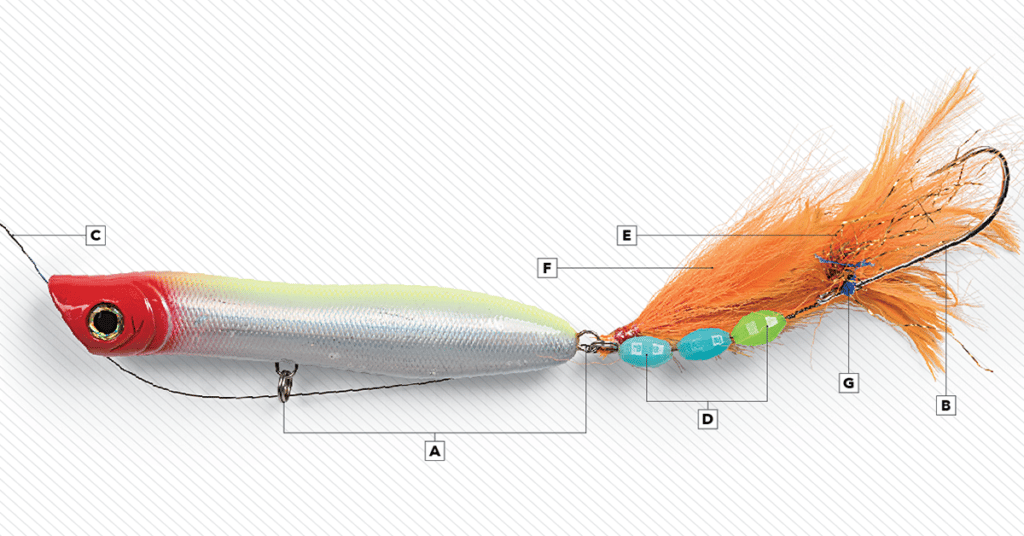
Remove the treble hooks and add heavy-duty split rings [A] to the head, midsection and rear of the popper. A needle-eye 9/0 Mustad Sea Demon hook [B] attaches to single-strand No. 9 wire [C] by first passing the wire through the eye, around the back of the hook shank, and back through the eye again before making the haywire twist. This is important to keep the hook from swinging, plus it creates a loop used later to hold other key parts to the lure.
The wire is trimmed to 3½ feet in length, and large spacer beads [D] are threaded onto the wire. The spacers keep the hook 2 inches from the plug when the wire is fed through the three split rings (starting at the back of the plug, of course). Pull the wire all the way through and attach a swivel so the plug is ready to be knotted to the braided leader.
Then dress a piece of No. 12 wire to add even more flash to the plug. Sharks are often released with the hook still in their mouth, so try not to leave feathers hanging from their lip. Double the piece of wire over with a loop on each end so it totals 4 inches in length, and put the wire in a fly-tying vice.
First, add hollow gold Mylar piping [E] to the wire, with the cord removed and the strands spread out. Next, tie on a bunch of bright orange bucktail and feathers [F] splayed outward. To attach the dressed wire to the lure, the front loop of the wire is threaded onto the split ring at the tail of the lure. A wire-tie [G] attaches the rear loop of the 4-inch wire to the leader above the hook. When the plug slides up the leader wire during the release, that fluffy attractor pulls away from the hook and stays with the popper.
About the Author: Capt. Zac Grossman used to run the charter boat Mako Express — named for his favorite target — out of Montauk, New York. Retired in South Florida these days, he’s a regular charter customer, booking as many trips as possible with friends and writing about the experience.








